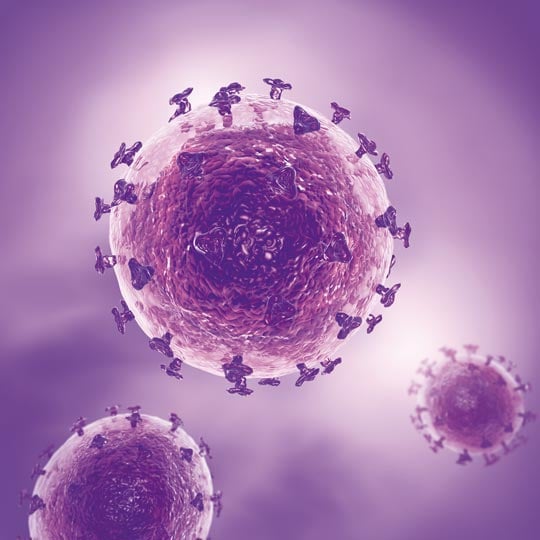Modes of Transmission


Mpox can be transmitted both from animals to humans and from person to person. Human-to-human transmission, which normally requires close physical contact, has only been a focus since 2022. The virus primarily uses tiny skin lesions or mucous membranes (eyes, mouth, nose, genitals) to enter the body. Particularly high virus concentrations are found in the typical pustules, but other bodily fluids (secretions and excretions) probably also contain viruses. While droplet infection is theoretically conceivable, it probably only occurs with prolonged face-to-face contact. Furthermore, the virus can be transmitted from pregnant women to the unborn fetus or to the child during birth [3-5].
Transmission via animals is possible through contact with infected animals or contaminated animal products, e.g. through bites, close handling, contact with secretions or excretions, consumption of contaminated, insufficiently cooked meat, etc. Even though monkeys can become infected, the presumed wild animal reservoir for the Mpox virus is not monkeys, but mainly rodents [3-5].
To contain the further spread of Mpox, the population should be informed about preventive behavioral measures. These include, for example, avoiding close contact with (suspected) infected individuals. Also, laundry items such as towels or bed linen should not be shared. Vaccination against human smallpox (variola) offers a certain degree of protection against Mpox and can be administered under specific indications. Furthermore, it is important to quickly identify new cases [3-5]. Individuals with confirmed disease should isolate themselves at home until general symptoms have subsided and scabs and crusts have completely healed or fallen off. Monitoring of asymptomatic contacts of infected individuals is recommended [3,5].
To prevent the transmission of Mpox in healthcare facilities, proper hand hygiene with a hand disinfectant with at least limited virucidal activity and appropriate glove changes are recommended. Employees who directly care for sick patients should also protect themselves with FFP2 masks and personal protective equipment. Disinfectants with at least a limited virucidal spectrum of activity should also be used for surface disinfection. Since the virus can persist for a long time, contact times must be strictly observed [5].
According to the WHO, 29,607 cases had been reported from 47 countries by April 14, 2025. By the end of 2022, these cases exclusively concerned the strain circulating in West Africa (clade IIb), which causes less severe cases than the Central African strain (clade I/Ib) [6]. In July 2022, the WHO declared the Mpox outbreak a Public Health Emergency of International Concern (PHEIC) for the first time. Given that a new virus strain, Clade Ib, is spreading in Central Africa, the WHO renewed its PHEIC assessment on August 14, 2024 [7]. At the end of April 2025, a case of clade I was reported in Sweden for the first time outside of Africa [8].
The risk from clade I for the European region is currently considered low/very low [9].
Since the Mpox virus is an enveloped virus, disinfectants (for both hands and surfaces) that have at least a limited virucidal spectrum of activity are recommended [6].
Click here to find products with activity against enveloped viruses.